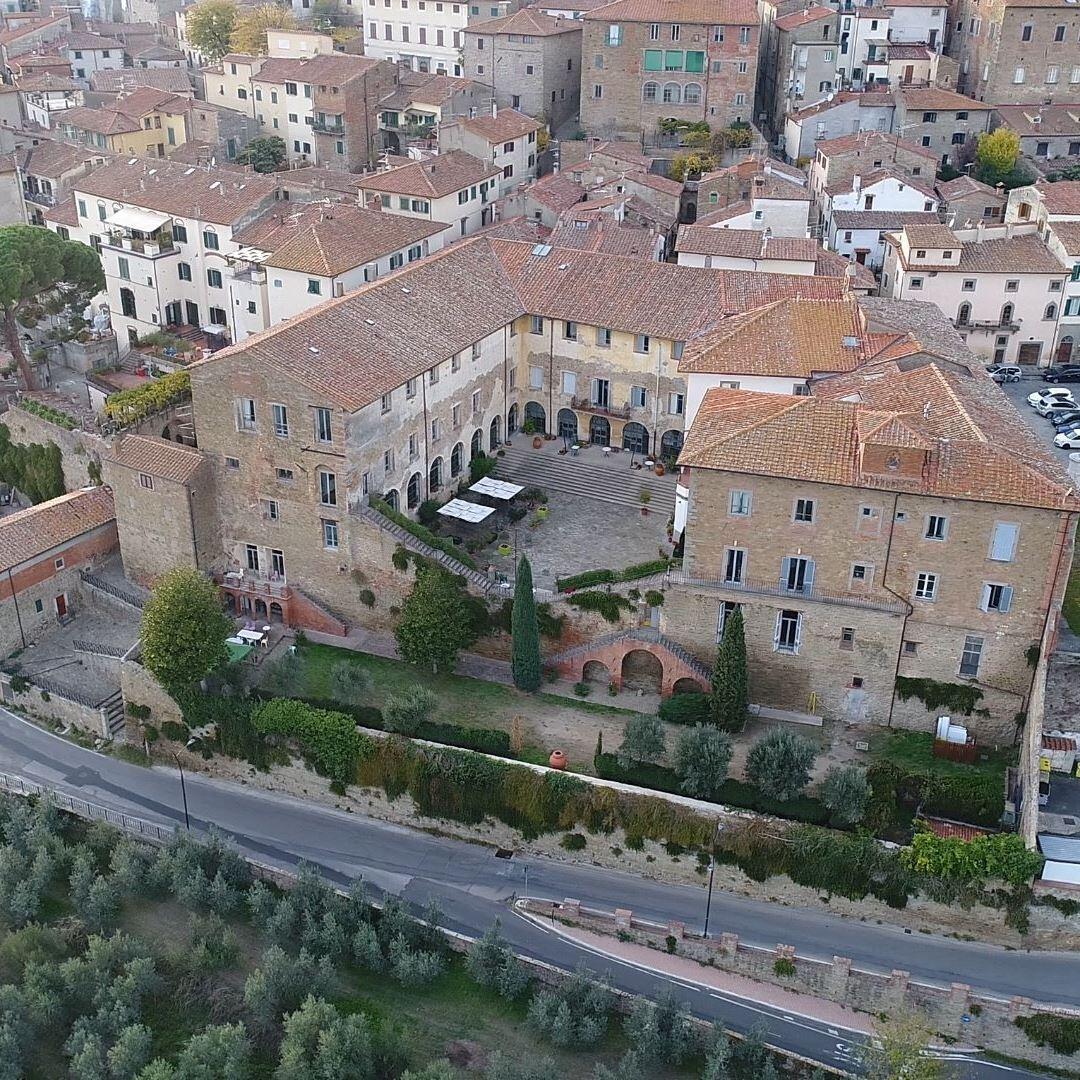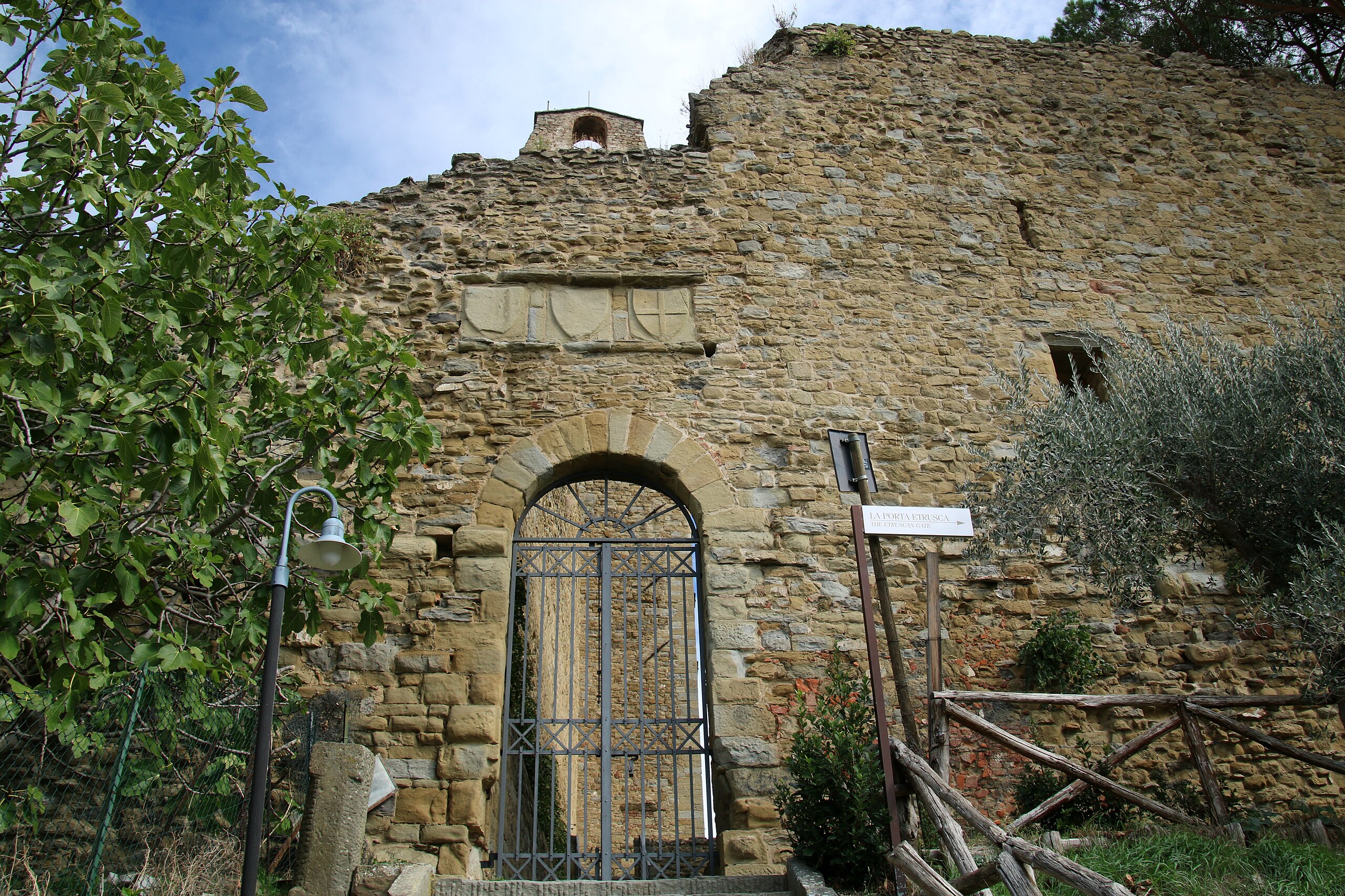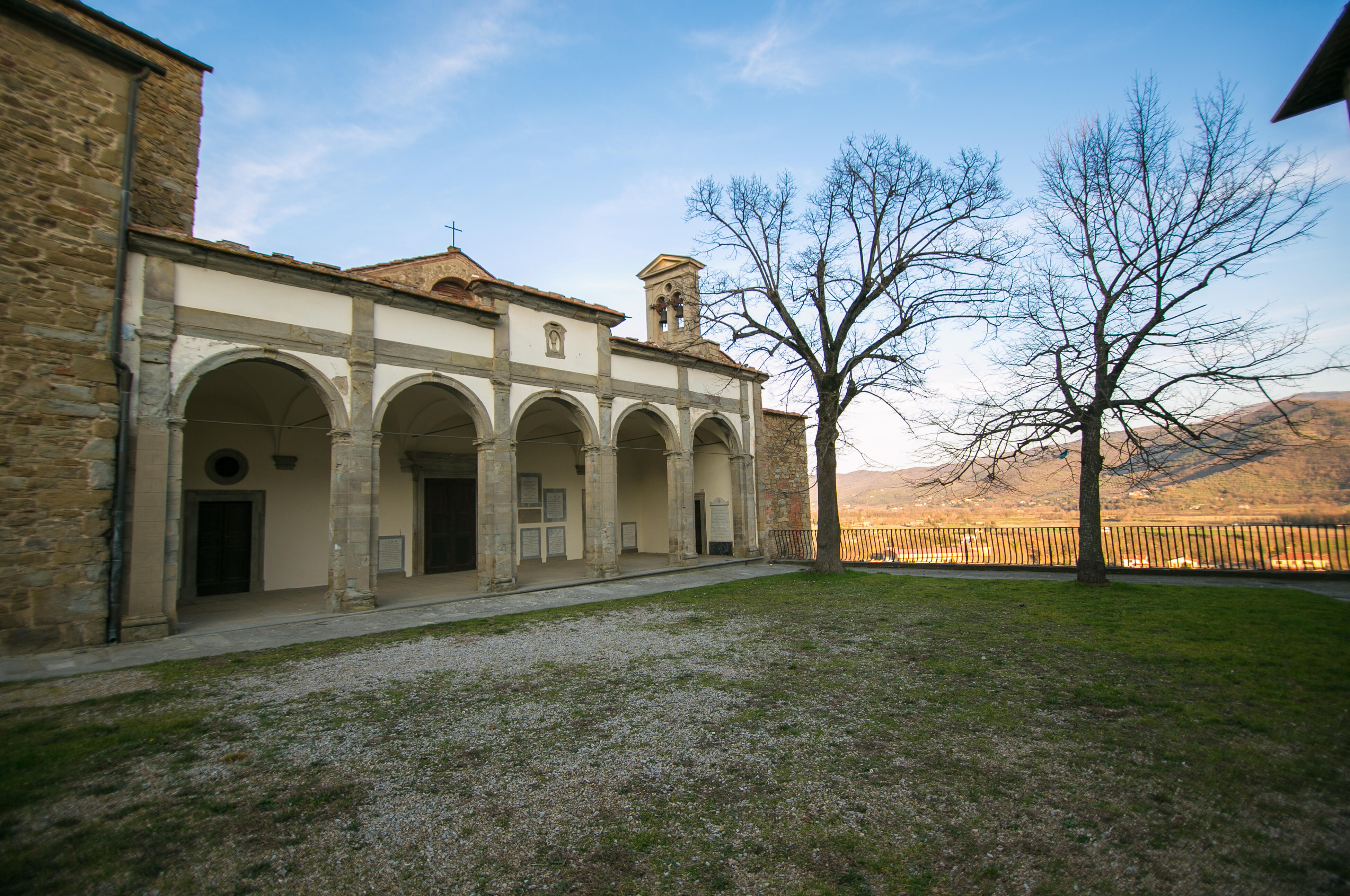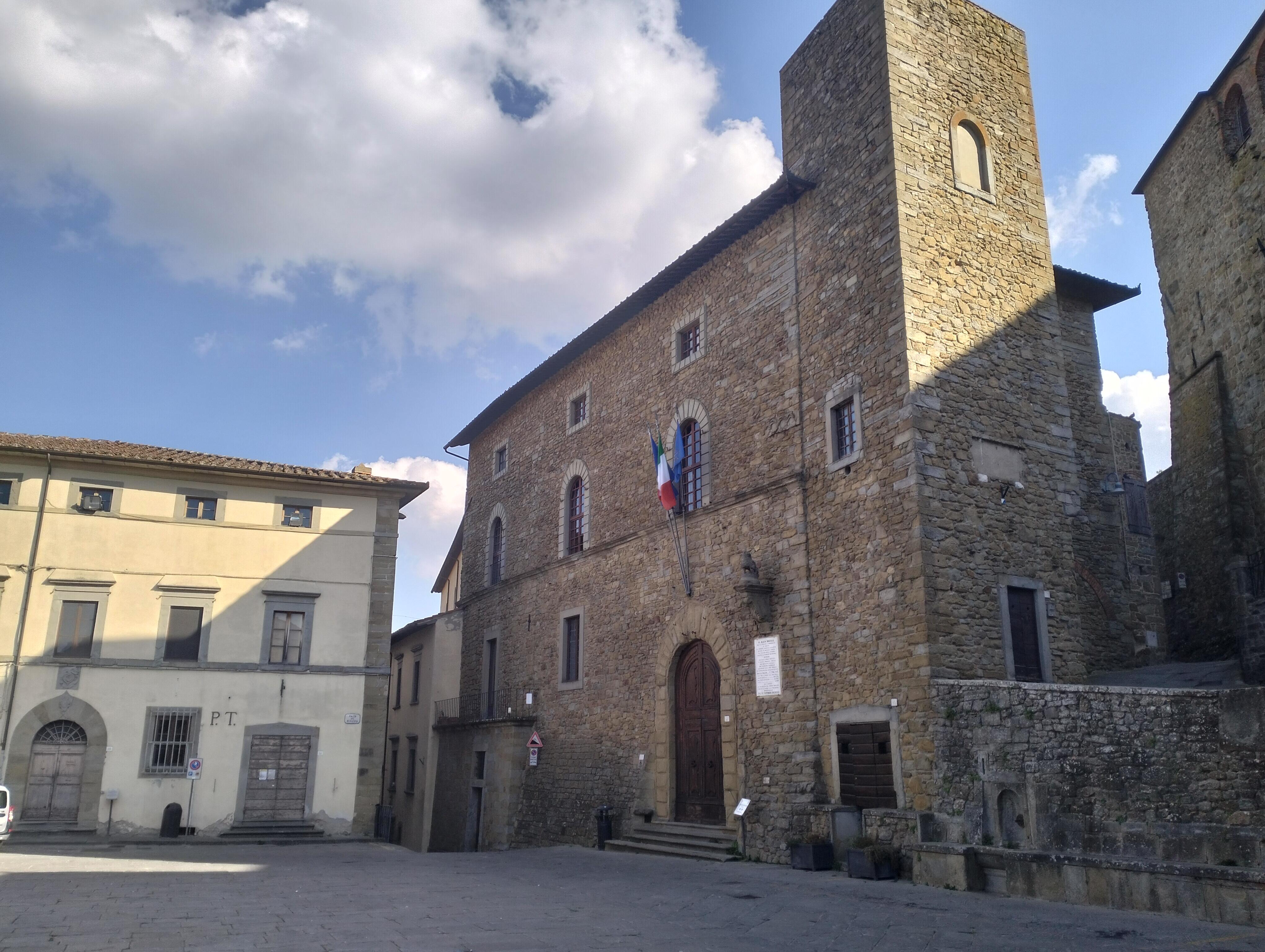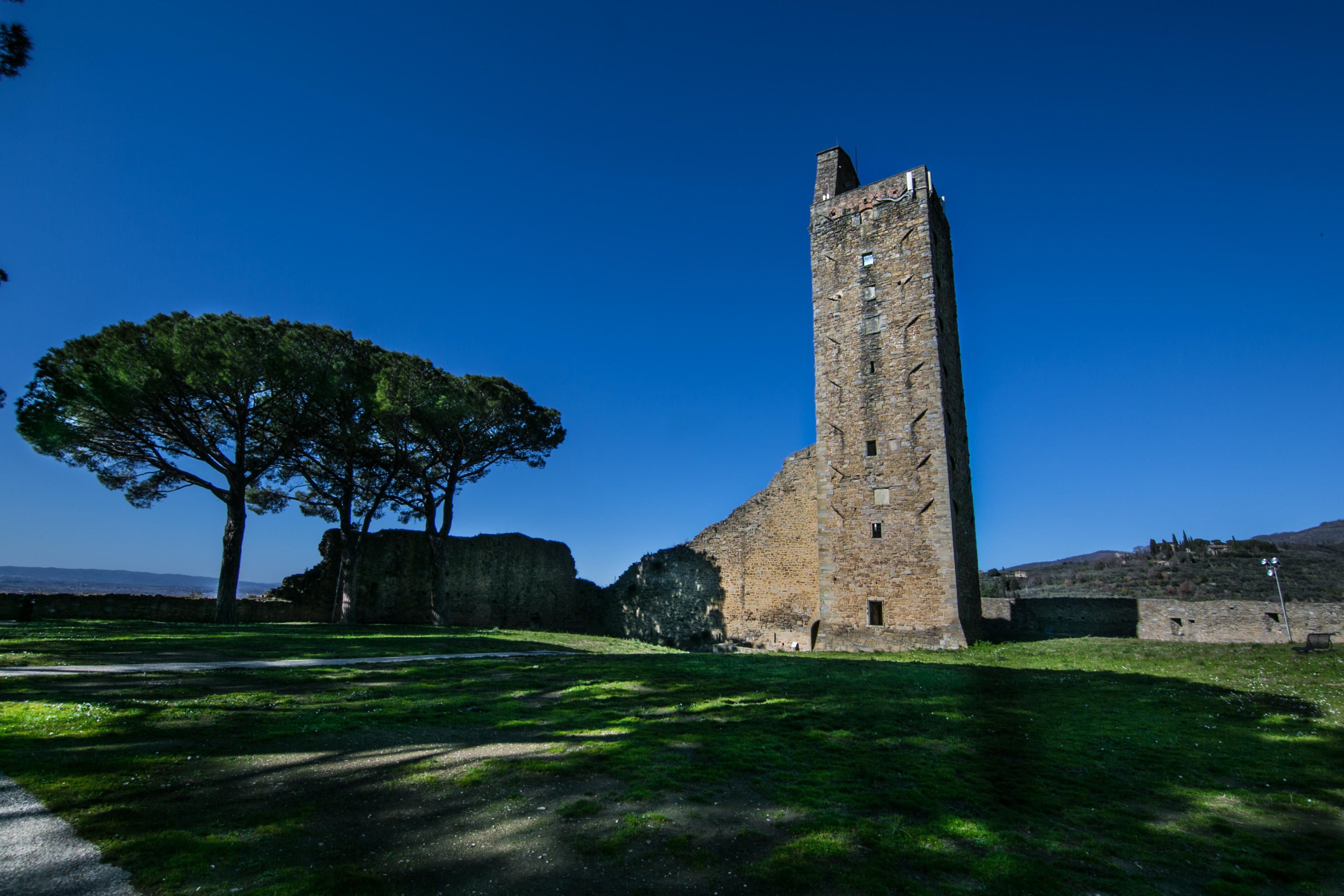POINT OF INTEREST
HISTORICAL BUILDINGS
Castle of Montecchio Vesponi
The Montecchio Vesponi Castle is one of the most evocative fortresses in all of Tuscany.
Built on a hill at the confluence of the Val di Chio and Val di Chiana, it served as a strategic point for controlling the ancient route between Arezzo and Cortona and the entire valley.
Immortalized in the backgrounds of some paintings by Fra Angelico, it still retains an imposing crenellated wall stretching 263 meters with nine watchtowers.
The toponym Monticulus refers to the modest height of the hill on which the castle stands; the name Vesponi may instead derive from the noble Arezzo family of the Guasconi, who owned it in the 11th century. The fortified settlement was first mentioned in 1014, ceded by the Abbey of Farneta to the Marquises of Monte Santa Mariai; the castle later became the subject of bitter disputes between Arezzo and Florence, who sought to consolidate their influence over the area.
The landscape surrounding Montecchio Vesponi Castle has been nominated for UNESCO World Heritage status.
Images that tell a story
Welcome to our gallery: a collection of images that tell moments, emotions, and details that often escape words. Each shot is a fragment of history, a memory to share, a perspective to explore. Browse and let yourself be inspired.
How to Get Here
Address:
Localita Montecchio Vesponi 353
52043 Castiglion Fiorentino (AR)
Contacts
Below are our contacts through which you can reach us:
Share the page
Below are our references through which you can contact us:


 ITA
ITA
